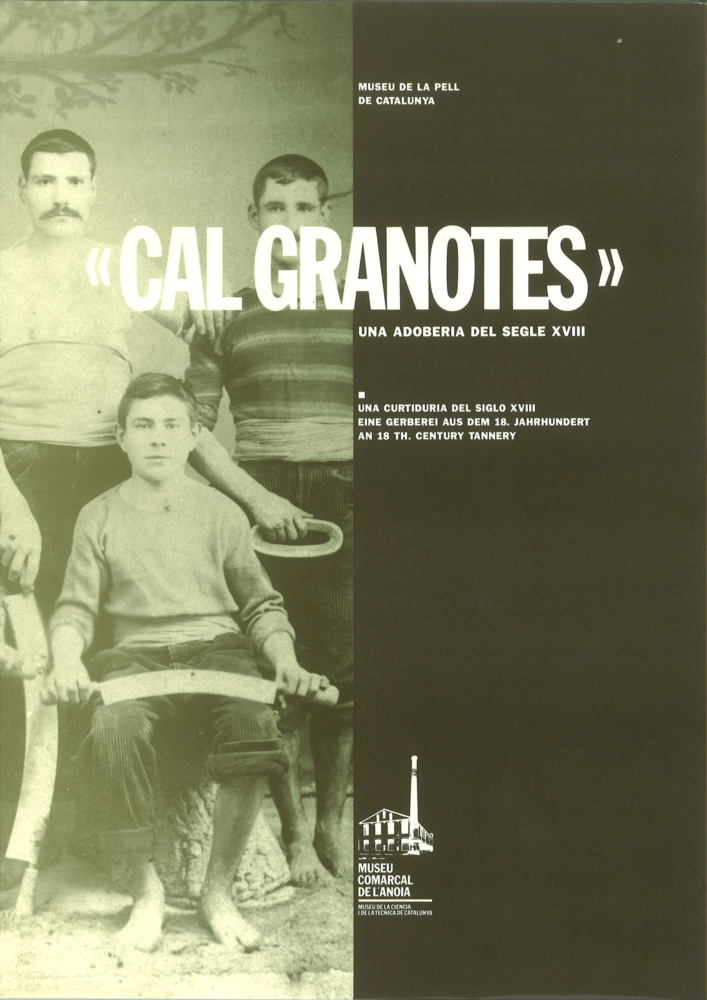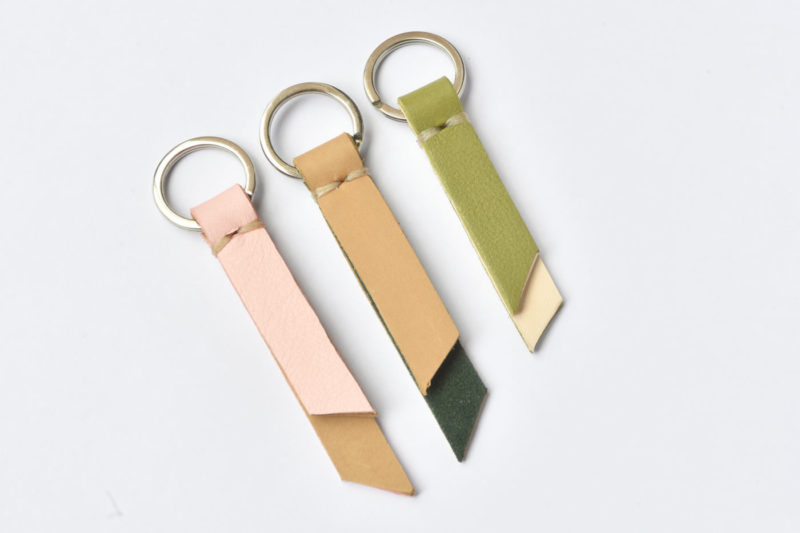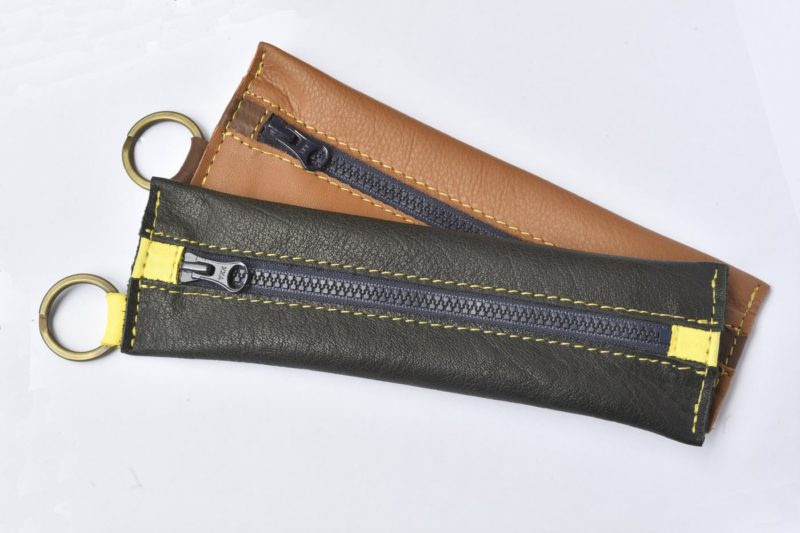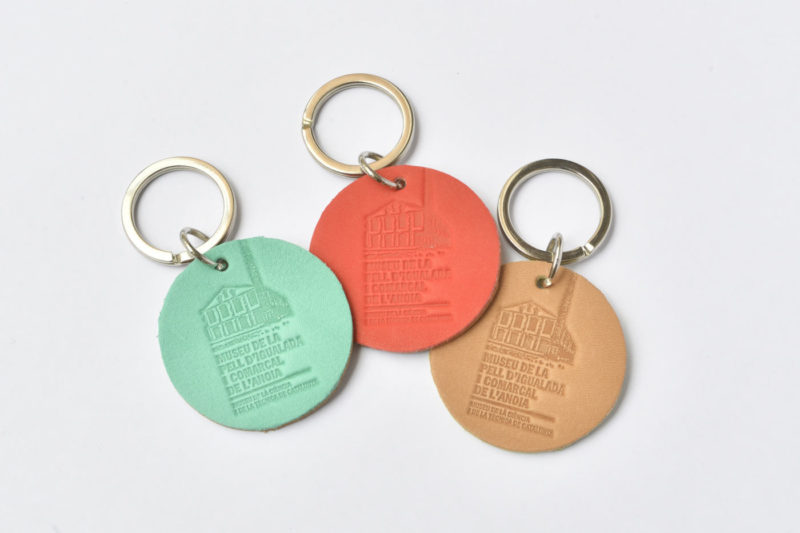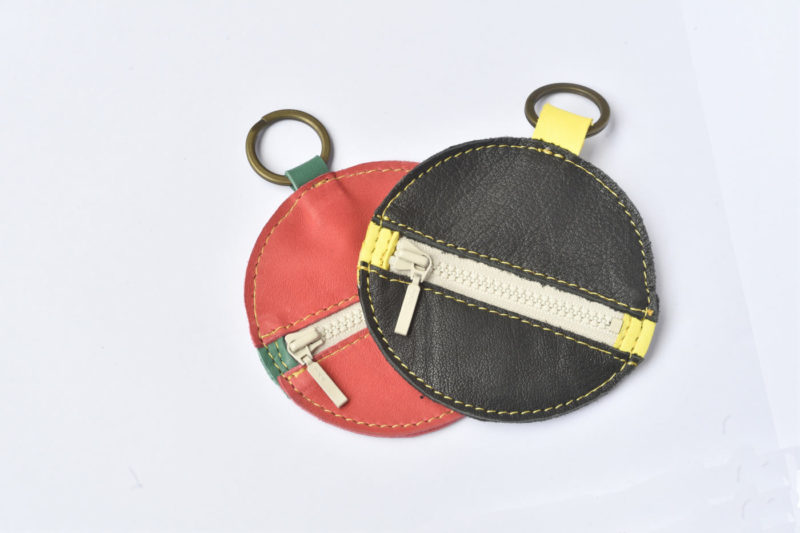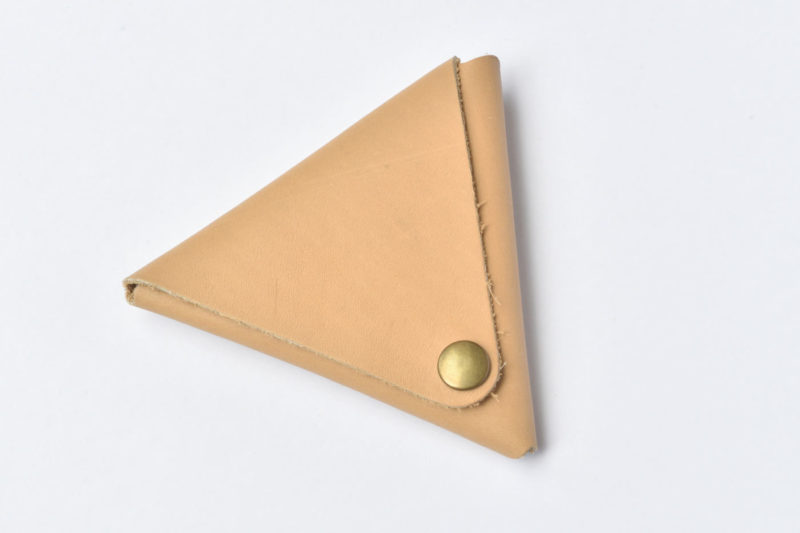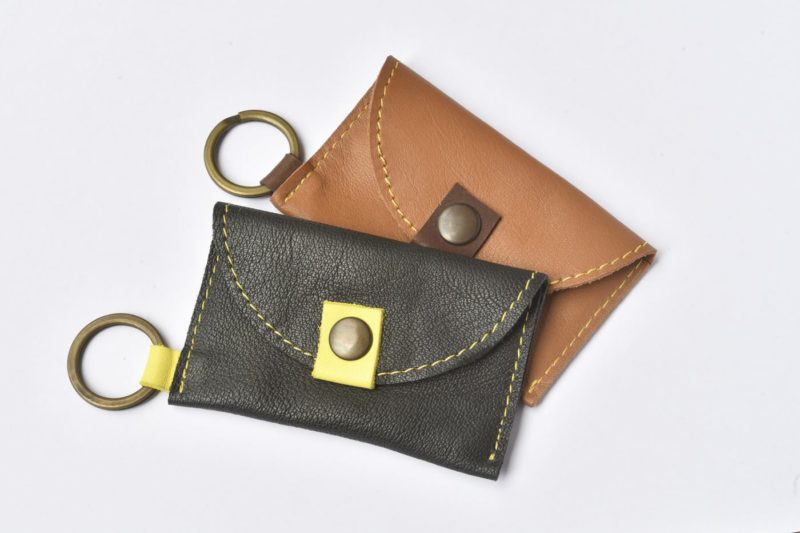History
Start > The Museum > Historry
The Leather Museum has its origins in the City Museum, inaugurated in 1949 as a result of initiatives undertaken by the Igualada Centre for Regional Studies. With the support of the town’s tanners, it was here that a section of the original museum was devoted to the manufacture of leather. In 1982, the old museum came under the management of the Fundació Pública Municipal Museu Comarcal de l’Anoia.
In 1983, Igualada Town Council, the Generalitat Museum Service and the Tanners’ Guild purchased the Cal Granotes Tannery (18th century), which was excavated, restored and opened to the pubic in 990. The Town Council also acquired Cal Boyer, an old textile factory, which is now the Leather Museum. After being restored and refurbished in phases, different spaces were opened between 1986 and 1999 that currently house permanent exhibitions devoted to the industrial tannng heritage and the use of water for the manufacturing of leather.
In 1988, the Museum, together with new museums under the auspisces of the Diputació de Barcelona, founded the Local Museums Cooperational Commission, later known as the Local Museums Network. In 1998, it was officially declared as a section of the Catalan Museum of Science and Technology and became a member of the mNACTEC Territorial System. In 2015, it subsequently became part of the Igualada Leather Cluster Barcelona.
Museum Collections and Inquiries
Start > The Museum > Museum Collections and Inquiries
The Museum’s reserves include an artistic collection consisting of paintings and sculptures, altar pieces and religious art, archeology, paleontology, science and technology, ethnology and natural sciences. Some of these collections are accessible via Museums online.
The Museum’s bibliographic collection consisting of books and documents on leather tanning forms part of the Generalitat de Catalunya Specialized Library Network (BEG) and can be consulted on the BEG catalogue online.
The Museum has a consultation service for attending to inquiries about its collections as well as advice on research work. Inquiries may be made by prior arrangement from Monday to Friday between 9 and 13 h by calling 938046752 or by email to m.igualada@diba.cat.
Publications
Start > The Museum > Publications
“Cal Granotes”. An 18th century tannery.
Publication on the permanent exhibition on tanning at the Museum since 1990, specifically the traditional, pre-industrial, Moroccan tanning processes. Contains texts, historical images and photographs of the most relevant artifacts. Versions available in Spanish, English and German.
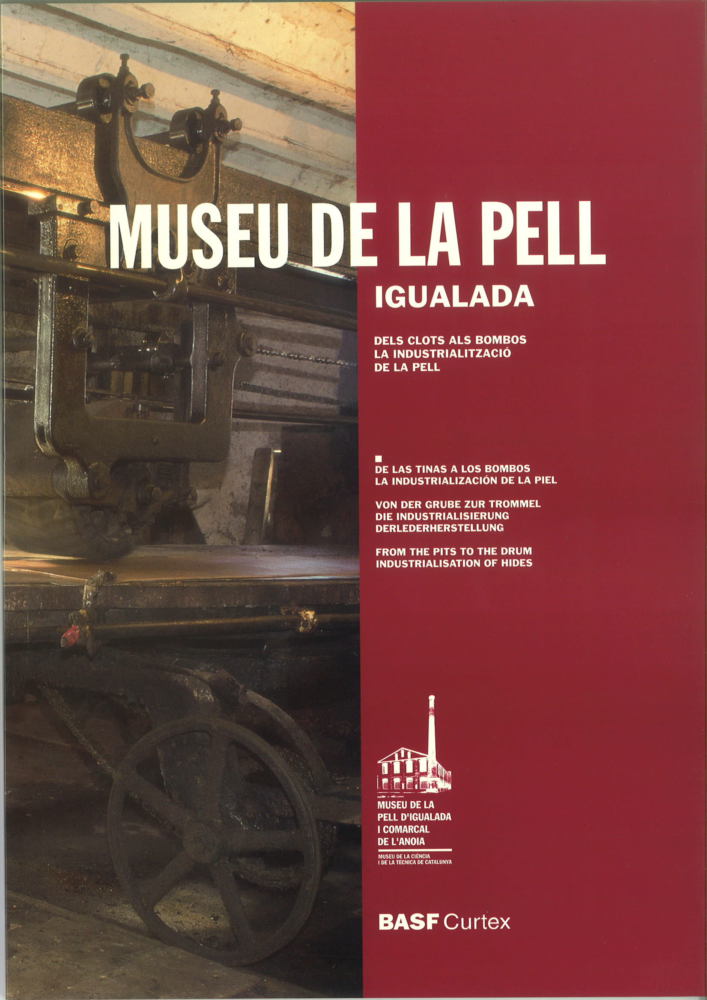
Leather Museum. Igualada. From the vats to the drums. The industrialization of leather.
Publication on the processes “From the vats to the drums” and “The industrialization of leather”, at the permanent exhibition space of the Igualada Leather Musuem since 1999. Texts, images and photographs of the most relevant exhibits. Versions available in Spanish, English and German.
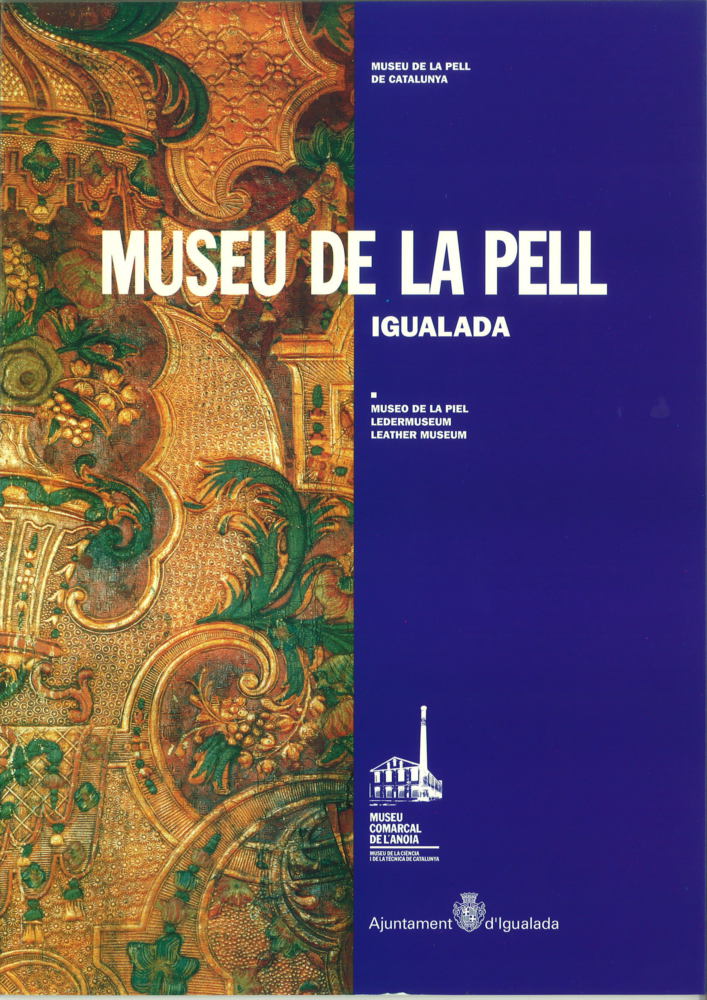
Publication concerning “Leather in history” and “A world of leather”, in the permanent space of the Igualada Leather Museum, created in 1995. Texts, images and photographs of the most relevant exhibits. Versions available in Spanish, English and German.
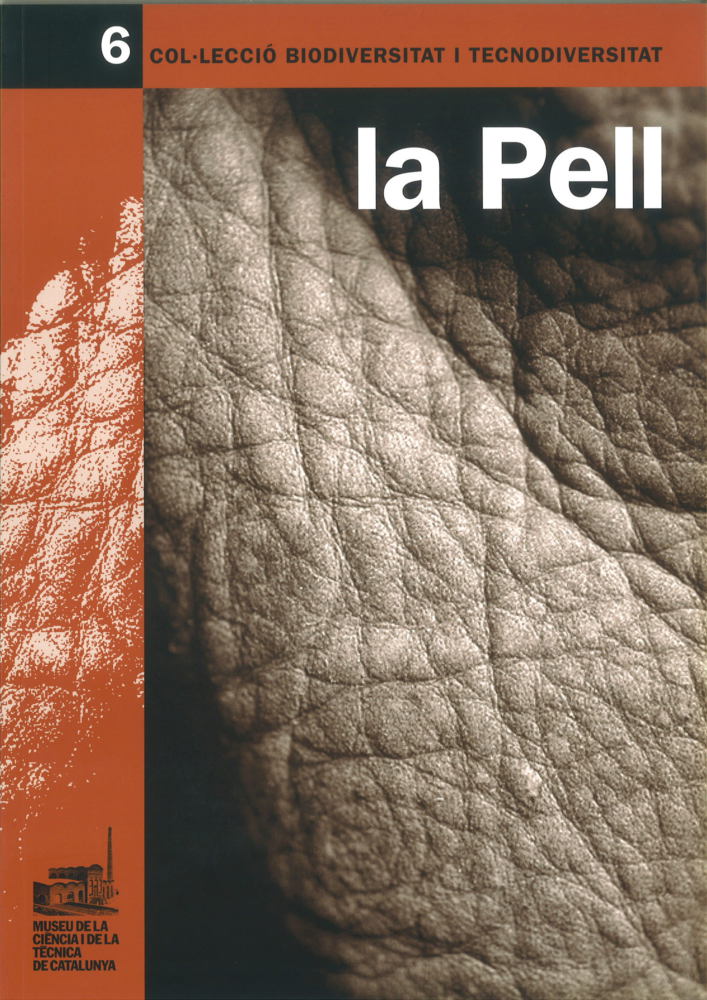
Leather. The Biodiversity and Technodiversity Collection
Description of the complete process of the transformation of leather, including its environmental impact and the treatment of general waste products.
Only abiable in Catalan.
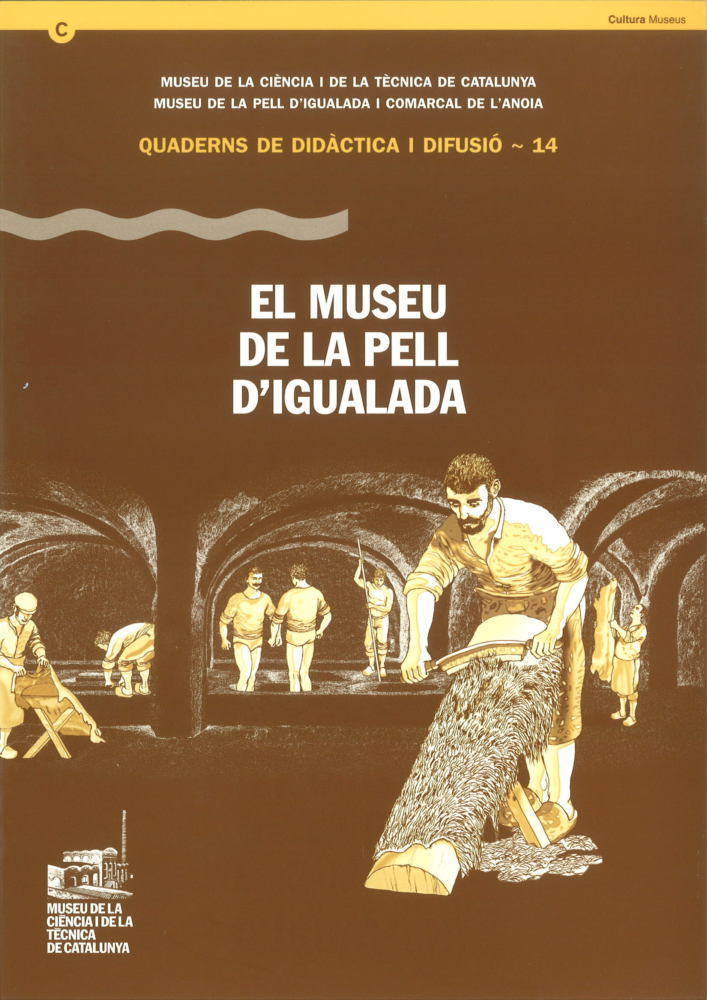
Igualada Leather Museum. Education and Outreach Portfolio
Portfolio on tanning in the town of Igualada, from the pre-industrial process to the advent of industrialization.
Only abiable in Catalan.
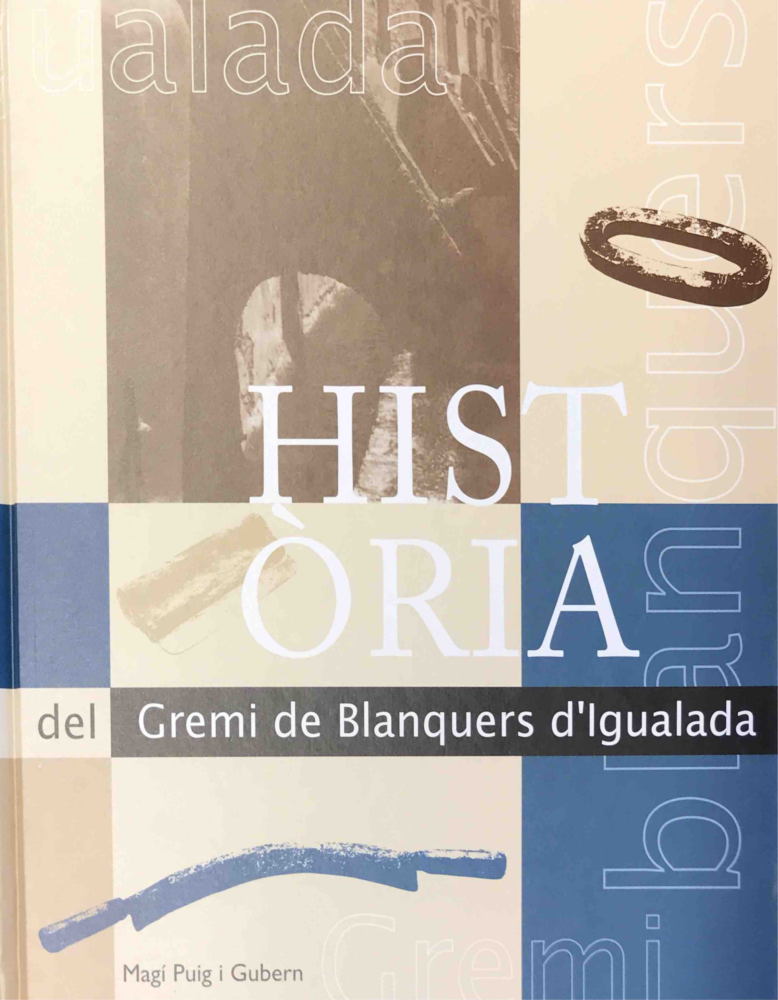
History of the Igualada Tanners’ Guild
Published by the Igualada Tanners’ guild in 1997. It recounts the history of the Guild from its beginnings to the end of the 20th century. It includes documents, photographs and an up-to-date inventory of the leather tanneries and warehouses in Igualada.
Only abiable in Catalan.
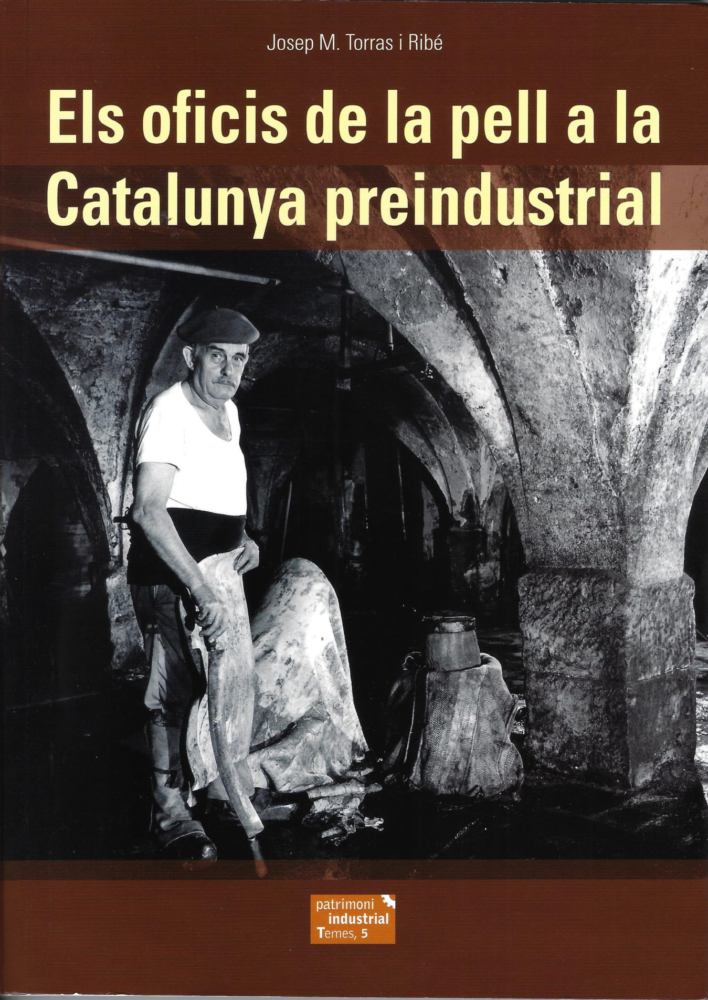
The leather craft and trade in pre-industrial Catalonia by J.M. Torras i Ribé
A compendium of the history, heritage and techniques of the leather trade. It consists of an analysis of the geographical distribution of leather manufacture and a study of how it functions, the organization of work and the architectural features of the tannery buildings.
Only abiable in Catalan.
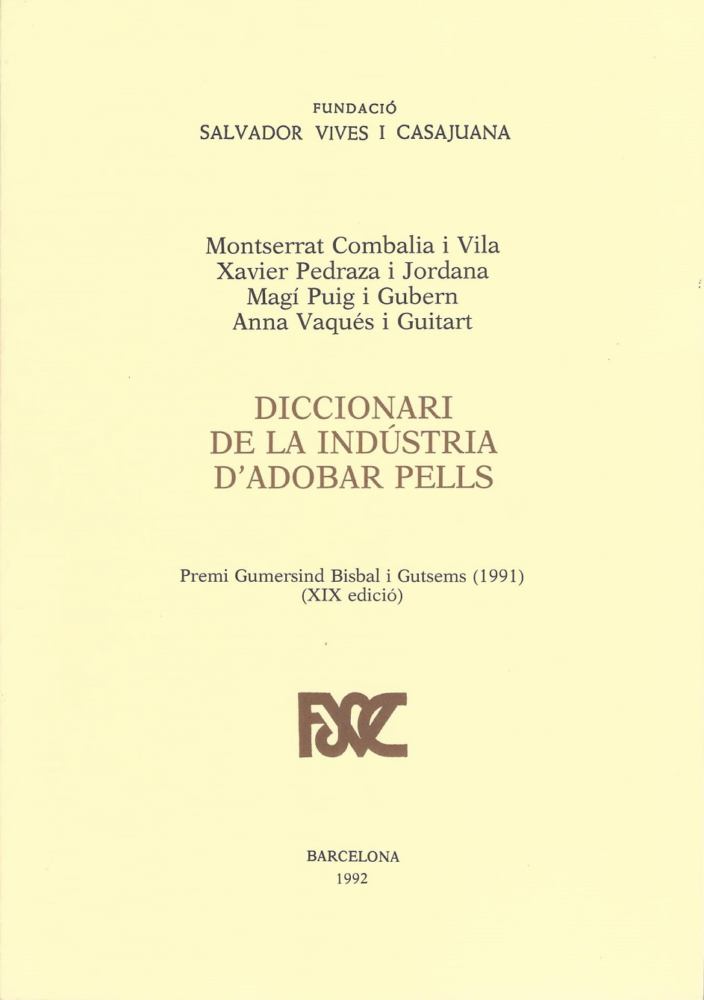
Diccionari de la indústria d’adobar pells
Vocabulari editat el 1992, amb revisió terminològica del TERMCAT. Abasta tots els termes que fan referència a la pell; recull la definició en català i les equivalències en castellà.
Only abiable in Catalan.
LEASING AND RENT OF MUSEU SPACES
Start > The Museum > Spaces to rent
All the spaces are equipped with reduced disability access. Inquiries about availability should first be made by telephone 93 804 67 52 or email to m.igualada@diba.cat, and subsequently the completion of an application form.
As part of the events, it is also possible to include exclusive private visits, outside of the usual opening times, to the halls and spaces belonging to the Museum: the Cal Granotes Tannery, the Igualadina Cotonera, the Cal Pasqual Gas Generator, the Sant Jaume Sesoliveres Church and the l’Espelt Roman villa.
VESTIBULE.
Located at the entrance to the Museum, it has a total surface area of 144 m2 and capacity for 72 people. This is a space suitable for receptions. It enjoys natural light and has access to the courtyard. It is equipped with two refrigeration chambers and a dispenser for hot drinks. Free wifi.
CAL GRANOTES COURTYARD – BARK SHREDDING MILL.
This is the courtyard that stands at the entrance to the Cal Granotes Tannery. Presided over by a bark shredding mill and a stone bench at one end. This space can be used for small-scale, outdoor events, as well as for garden parties, lunches and dinners, concerts and shows. It has a surface area of 112 m2 and a capacity of 100 people.
WORKSHOP.
Situated on the first floor of the Museum, it consists of a surface area of 54 m2, a seating capacity of 27 people and benches for working with hides or conducting all types of manual skills, workshops or training in general. Natural light or artificial lighting. It has a connection for water and a long fixed workbench. An easel with sheets of paper is also available. Free wifi.
TEMPORARY EXHIBITION HALL.
An ample, regular space located on the ground floor of the Museum consisting of 180 m2 with access from the vestibule. With a capacity of 112 people, it is ideal for all types of exhibitions and is also suitable as a polyvalent space for different kinds of events. Two movable walls enable the space to be adapted as required. Artificial lighting. Air-conditioning. Free wifi and portable loudspeaker.
CAL BOYER TRUSS.
Located on the first floor of the Museum, it has a surface area of 769 m2 and is a space suitable for large-scale events as well as film shoots and photographic sessions. It has a capacity for 270 people and is provided with both natural light and artificial lighting. It is also equipped with a service lift with access to the courtyard and an elevator for the public with access to the vestibule. This is a space without air conditioning. Wifi is free.
CAL BOYER COURTYARD.
This is an L-shaped courtyard that runs along the outside of the entrance façade (west) and the south of the building. In summer, the west side of the courtyard receives the shade of the hackleberry trees. A broad ramp makes it accessible from the street. It is equipped with terraced seating, benches, waste bins, a fountain and a public toilet. It is a suitable location for fairs, morning and daytime meetings, open air lunches and dinners, concerts and different types of shows and performances. The total surface area comprises 1,190 m2 and has a capacity of 600 people. There are three electrical charge points and one connection for water.
A service yard is located behind the factory chimney, between the two halls, and may be used as an extension space with an access to the vestibule. It can be adapted for smaller scale, open air activities as well as for picnics and buffets. It has a surface area of 140 m2 and a capacity of 75 people.
ESPAI CUB.
Located on the first floor of the Museum, in the Nau d’Encavallades (Truss Room). Perimeter space of 50 linear metres for temporary exhibitions. Natural light or artificial lighting.
.
AUDITORIUM.
The conference hall or auditorium is located on the ground floor. It consists of seating for 154 people, a conference table and a speakers’ lectern. It is equipped for conferences or seminars, audio-visual and multimedia presentations. There is air-conditioning, a cable connection for internet, free wifi, and a stereophonic sound system (a stand microphone, two table and two cordless microphones). Video equipment with DVD and PC projection systems. Retractable screen. Projection box with professional ten-channel control panel.
The Museum Netwrok
Start > The Museum > The Museum Network
Catalan Museum of Science and Technology Territorial System
http://sistema.mnactec.cat/en
Network of Local Museums
http://www.diba.cat/web/opc/default_xml/
Catalan Industrial Tourism Network
http://www.xatic.cat
Leather Cluster Barcelona
https://leatherbarcelona.com/en





